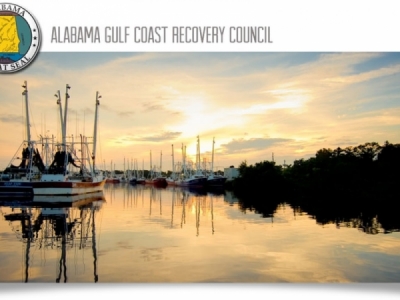
Posted on April 15, 2019
A slate of $132 million in projects intended to offset environmental impacts of the Deepwater Horizon disaster on the Alabama coast has received federal approval, Gov. Kay Ivey’s office announced Friday.
The news is a step forward in the process spelled out by the federal RESTORE Act, which governs disbursement of money paid in penalties by companies involved in the disaster. While it isn’t the last step, it means that 28 separate projects can now be submitted for individual approval, which will allow work to begin.
“We’ll be submitting those starting now,” said Chris Blankenship, commissioner of the Alabama Department of Conservation and Natural Resources. “We should see work starting later this summer on some of these.”
They are:
- Environmental Restoration of Cotton Bayou and Terry Cove, $515,000
- Development for a Regional Strategic Plan for the Coastal Alabama Region, phase III, $579,375
- Expansion of the Orange Beach Wildlife Rehabilitation and Education Center/Gulf Coast Wildlife Recovery and Interpretive Center, $472,255
- Auburn University Gulf Coast Engineering Research Station, $9,270,000
- Characterization and Delineation of Significant Sand Resource Areas Essential for Beach Restoration, Offshore Alabama, $950,175
- City of Chickasaw Sewer Rehabilitation Project, $1,339,000
- Alabama Gulf Seafood Marketing Campaign, $2,937,699
- Aloe Bay/Mississippi Sound Water Quality Enhancement Project, $11,845,000
- Extension of Effluent Force Main from Bayou La Batre Wastewater Treatment Facility, $16,068,000
- Bayou La Batre Collection System/Lift Station Upgrades, $13,189,150
- Lillian Park Beach Habitat and Shoreline Protection, $645,254
- Perch Creek Area Sanitary Sewer Trunk Line, $3,665,048
- Longevity, Stability & Water Quality Improvements, Bon Secour DMDA, $350,966
- Replacement of Substandard Facilities at the ADEM Coastal Office & Mobile Field Office, $6,038,599
- Mobile Area Storm Water Mapping & Resiliency Planning, $3,090,000
- Three Mile Creek Watershed Restoration, $12,081,900
- Fairhope Area Community-Based Comprehensive Land Use Plan, $669,500
- Fort Morgan Parkway Trail Extension, $4,566,608
- Meaher Park Improvements, $3,553,500
- Mobile County Dirt Road Paving (Sediment Reduction) Program, $10,395,914
- Alabama Point Seawall Repair, $2,562,640
- Canal Road Improvements East of Ala. 161, $1,903,718
- Orange Beach North Sewer Force Main Upgrade, $5,350,850
- Storm Water Management Improvements for Toulmin Springs Branch and Gum Tree Branch, $1,222,744
- Fairhope Sewer Upgrade Phase I, $10,300,000
- Little Lagoon Restoration Project, $6,175,557
- Eastern Shore Sanitary Sewer Overflows Prevention Plan, $1,030,000
- One Mobile: Reconnecting People, Work and Play through Complete Streets, $1,287,500
The list also includes a $300,000 planning grant for the state expenditure plan. Full details can be found online at https://restorethegulf.gov.
“The approval of the State Expenditure Plan continues reinvestment in the Alabama’s Gulf Coast communities as a result of the oil spill funds guaranteed to the people of Alabama through the RESTORE Act,” said Ivey. “As these projects move forward, I look forward to seeing the return on this investment, as we build a more resilient coast.”
The RESTORE Act divides restoration money into five “buckets” to be spent in different ways. In March 2018 the Alabama Gulf Coast Recovery Council unveiled a slate of 50 Mobile and Baldwin county projects adding up to $315 million that it had selected for approval. That announcement included $187 million in projects funded by Bucket 1 money, divided among Gulf Coast States for economic and environmental restoration. That portion wasn’t involved in Friday’s announcement.
The Alabama Gulf Coast Recovery Council also had voted to recommend $128.5 million in projects to be funded by Bucket 3 money, which is overseen by the federal Gulf Coast Ecosystem Recovery Council. Friday’s news was that that council had approved the roster of Bucket 3 projects submitted by the state council.
The list approved by the federal council is much the same as the one publicized by the state council last year. It omitted one small project, a stream gaging station on Fish River, but Blankenship said that had been funded with money from a different source.
The overall amount was slightly higher: Where the state council’s list of Bucket 3 projects added up to $128.5 million, the total approved by the federal council was $132.4 million.
Source: coastalnewstoday.com





